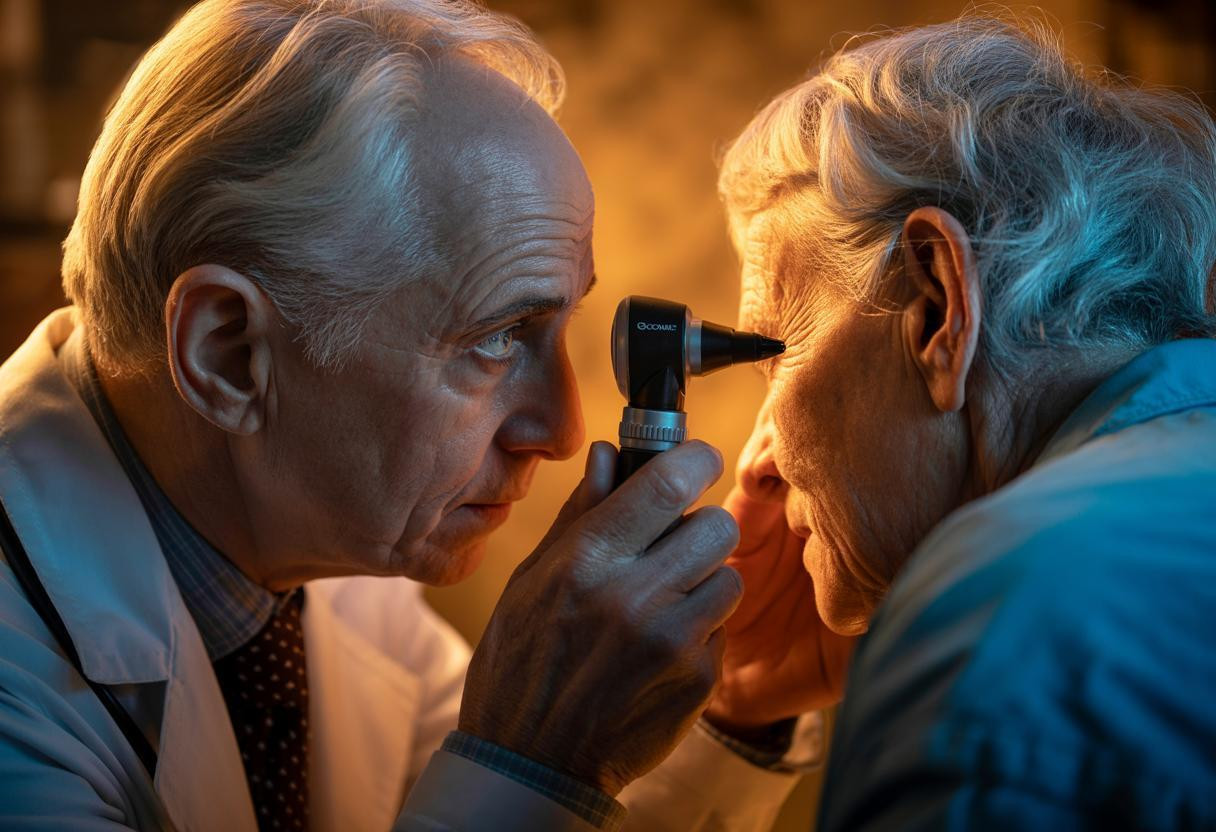If you’re over 60 and experiencing persistent ear itching that won’t respond to typical treatments, you might be dealing with a hidden fungal infection that affects 90% more seniors than previously understood. This isn’t just annoying discomfort—it’s a serious condition that can lead to permanent hearing damage if left untreated.
Recent medical research reveals that what many dismiss as “dry ears” or simple irritation often signals a deeper problem. Aspergillus and Candida fungi are quietly colonizing aging ear canals, creating symptoms that mirror other infections while requiring completely different treatment approaches.
The hidden epidemic affecting aging ears
Fungal ear infections now represent 10% of all outer ear infections, with seniors facing dramatically higher risks due to age-related changes in their ear environment. Unlike younger adults, older individuals produce significantly less protective earwax, creating an ideal breeding ground for opportunistic fungi.
Dr. Sarah Chen, an otolaryngologist at Northwestern Medicine, explains: “We’re seeing a surge in misdiagnosed cases where patients receive antibiotic treatments for weeks without improvement, only to discover the real culprit is fungal overgrowth that requires antifungal intervention.”
The connection between aging and fungal susceptibility goes beyond simple earwax reduction. Immunosenescence—the natural decline in immune function—leaves seniors vulnerable to infections their bodies once easily fought off.
Warning signs your itchy ears need immediate attention
Distinctive symptoms that separate fungal infections
Unlike bacterial infections that produce foul-smelling discharge, fungal ear infections create dry, cotton-like debris for Aspergillus or cheesy, white discharge for Candida. The itching intensity often exceeds what patients experience with other ear problems, creating an almost unbearable urge to scratch.
Many seniors also report hearing changes that come and go, tinnitus that worsens at night, and a peculiar sensation of “fullness” in the affected ear. These symptoms typically persist for weeks, unlike bacterial infections that usually resolve within days of proper treatment.
The dangerous misdiagnosis trap
Healthcare providers often miss fungal infections because symptoms overlap significantly with bacterial causes. Standard antibiotic treatments not only fail but can actually worsen fungal overgrowth by eliminating competing bacteria that normally keep fungi in check.
This misdiagnosis cycle can continue for months, during which the infection spreads deeper into ear structures, potentially causing permanent damage. The economic impact includes repeated doctor visits, multiple failed treatments, and eventual specialist referrals that could have been avoided with proper initial diagnosis.
Hidden risk factors amplifying your vulnerability
Seniors face a perfect storm of risk factors that younger adults typically don’t encounter. Diabetes affects 26% of adults over 65, creating elevated blood sugar levels that fungi thrive on. This connection explains why diabetes symptoms affecting older adults often correlate with increased ear infection rates.
Hearing aid use, while essential for many seniors, creates additional trauma to delicate ear canal skin while trapping moisture—two conditions that encourage fungal growth. The combination of diabetes and hearing aid use increases infection risk by over 500% compared to healthy younger adults.
Environmental factors play crucial roles too. Swimming, high humidity exposure, and even certain toxic substances in everyday products can disrupt the ear’s natural protective barriers, making fungal colonization more likely.
Revolutionary treatment approaches that actually work
Early detection protocols
Medical professionals now recommend monthly ear screenings for high-risk seniors, particularly those with diabetes or hearing aids. The key is recognizing that persistent itching lasting more than 48 hours warrants professional evaluation, not home remedies.
Modern diagnostic techniques include rapid PCR testing that can identify specific fungal species within hours rather than waiting days for traditional cultures. This speed allows for targeted treatment that addresses the exact pathogen causing problems.
Targeted antifungal strategies
Treatment requires a two-pronged approach: professional ear cleaning to remove fungal debris, followed by species-specific antifungal medications. Aspergillus infections respond best to clotrimazole solutions, while Candida requires fluconazole or miconazole treatments.
Prevention strategies focus on maintaining optimal ear hygiene without causing trauma. This includes avoiding cotton swabs, managing underlying conditions like diabetes, and ensuring proper hearing aid maintenance. For those with cardiovascular risks in seniors, treatment protocols must account for potential drug interactions and monitoring requirements.
Your action plan for healthier ears
Don’t ignore persistent ear itching—it’s your body’s early warning system. Schedule professional evaluation if symptoms persist beyond two days, especially if you have diabetes, use hearing aids, or have recently been exposed to water activities. Early intervention prevents complications that could affect your hearing permanently.
Remember: your ears deserve the same attention you give other aspects of your health. When itching becomes your constant companion, it’s time to investigate the fungal connection that too many seniors overlook until it’s too late.
